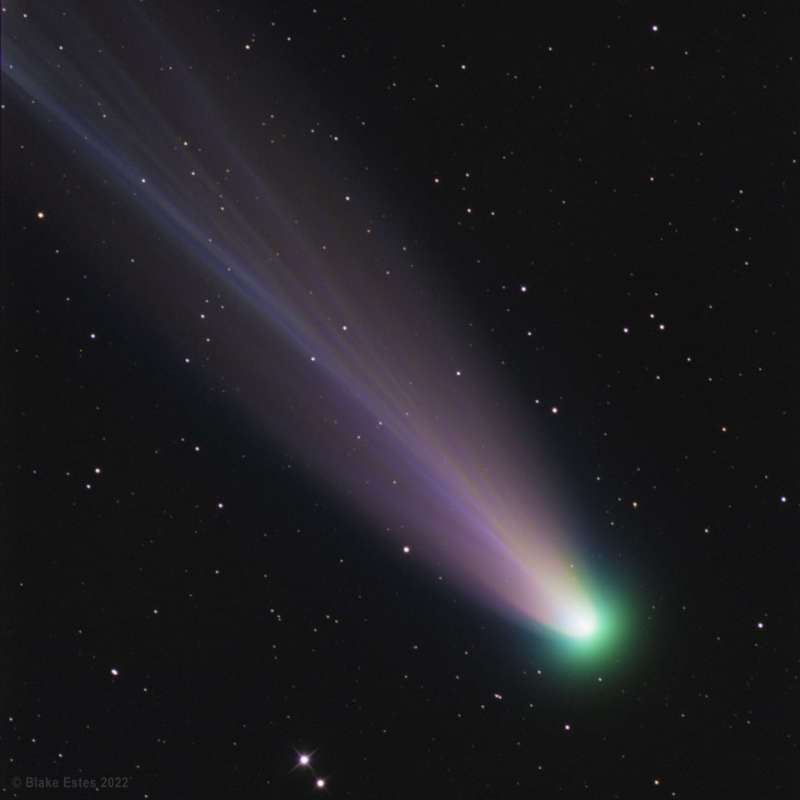
|
Credit & Copyright: Blake Estes
(itelescope.net)
Explanation:
What does Comet Leonard look like up close?
Although we can't go there, imaging the comet's coma and inner tails through a small
telescope gives us a good idea.
As the name implies, the
ion tail is made of
ionized gas -- gas energized
by
ultraviolet light
from the Sun and pushed outward by the
solar wind.
The solar wind is quite structured and sculpted by the Sun's complex and ever
changing magnetic field.
The effect of the variable solar wind combined with different gas jets venting from
the comet's nucleus accounts for the tail's complex structure.
Following the wind, structure in Comet Leonard's
tail can be seen to move outward from the Sun even alter its wavy
appearance over time.
The blue color of the ion tail is dominated by recombining
carbon monoxide molecules,
while the green color of the coma surrounding the
head of the comet is created mostly by a slight amount of recombining
diatomic carbon molecules.
Diatomic carbon is destroyed by sunlight in
about 50 hours -- which is
why its green glow does not make it far into the ion tail.
The featured imagae was taken on January 2 from
Siding Spring Observatory in
Australia.
Comet Leonard, presently best viewed
from Earth's Southern Hemisphere, has
rounded
the Sun and is now headed out of the
Solar System.
|
January February March April May June July August September October November December |
| |||||||||||||||||||||||||||||||||||||||||||||||||||||||
NASA Web Site Statements, Warnings, and Disclaimers
NASA Official: Jay Norris. Specific rights apply.
A service of: LHEA at NASA / GSFC
& Michigan Tech. U.
Based on Astronomy Picture
Of the Day
Publications with keywords: comet
Publications with words: comet
See also:
- APOD: 2025 December 1 Á 3I ATLAS: Tails of an Interstellar Comet
- APOD: 2025 November 25 Á Comet Lemmon and the Milky Way
- 3I/ATLAS: A View from Planet Earth
- APOD: 2025 November 17 Á Comet Lemmons Wandering Tail
- APOD: 2025 September 30 Á Comet Lemmon Brightens
- APOD: 2025 September 29 Á Two Camera Comets in One Sky
- APOD: 2025 September 26 Á A SWAN an ATLAS and Mars
